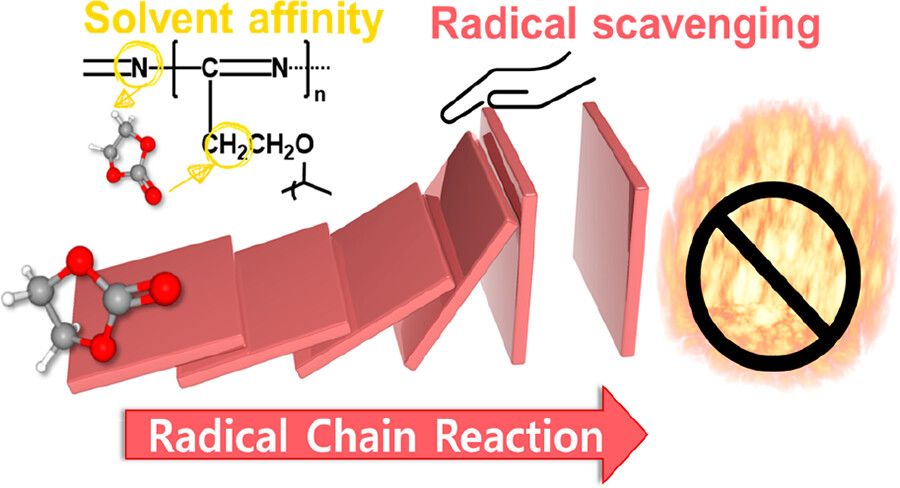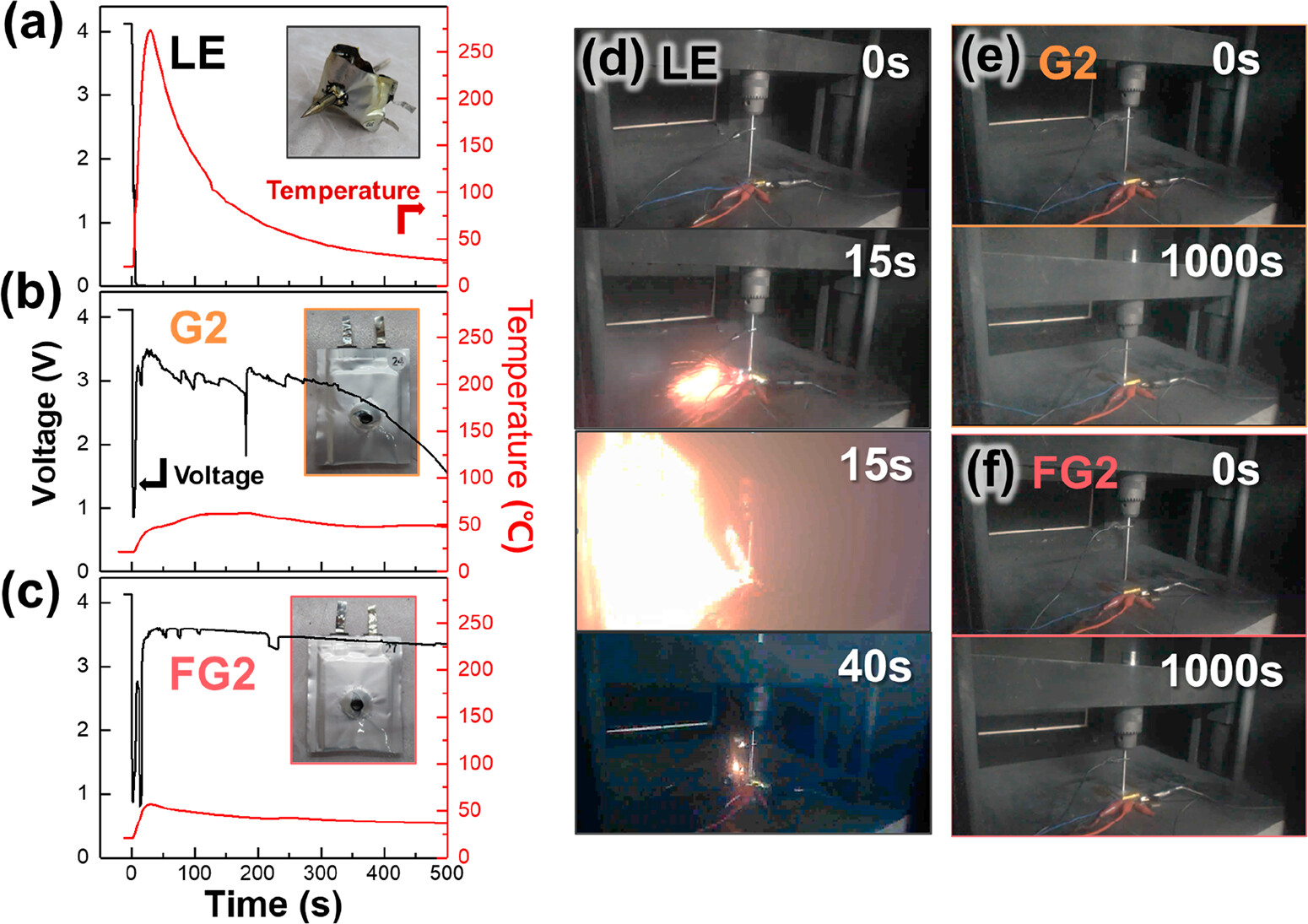Abstract
A collaborative research team, led by Professor Hyun-Kon Song in the School of Energy and Chemical Engineering at UNIST, Dr. Seo-Hyun Jung from Research Center for Advanced Specialty Chemicals at Korea Research Institute of Chemical Technology (KRICT), and Dr. Tae-Hee Kim from the Ulsan Advanced Energy Technology R&D Center at Korea Institute of Energy Research (KIER), has achieved a groundbreaking milestone in battery technology. Their remarkable achievement in developing a non-combustible gel polymer electrolyte (GPE) is set to revolutionize the safety of lithium-ion batteries (LIBs) by mitigating the risks of thermal runaway and fire incidents.
In the past, the potential flammability of LIBs has raised significant concerns, especially in electric vehicles, where fire hazards pose a serious threat to underground parking lots. Addressing this critical issue, the research team has successfully developed a groundbreaking non-combustible polymer semi-solid electrolyte, offering a promising solution to mitigate battery fires.
Conventionally, non-flammable electrolytes have heavily relied on the incorporation of flame retardant additives or solvents with exceptionally high boiling points. However, these methods often resulted in a considerable decrease in ion conductivity, compromising the overall performance of the electrolyte.

Figure 1. Schematic image, depicting the principles of operation of non-flammable gel electrolytes.
In their breakthrough research, the research team introduced a trace amount of polymer into the electrolyte, creating a semi-solid electrolyte. This novel approach dramatically increased the lithium ion conductivity by 33% compared to existing liquid electrolytes. Moreover, the pouch-type batteries incorporating this non-combustible semi-solid electrolyte exhibited a remarkable 110% improvement in life characteristics, effectively preventing unnecessary electrolyte reactions during the formation and operation of the solid-electrolyte interphase (SEI) layer.
The key advantage of this innovative electrolyte lies in its exceptional performance and non-combustibility. By suppressing radical chain reactions with fuel compounds during the combustion process, the polymer semi-solid electrolyte effectively inhibits the occurrence of battery fires. The research team demonstrated the excellence of the developed polymer by quantitatively analyzing its ability to stabilize and suppress radicals.

Figure 2. Nail penetration of 650 mAh pouch cells of NCM811||graphite. (a to c) Voltage and temperature profiles (d to f).
Jihong Jeong (School of Energy and Chemical Engineering, UNIST) emphasized, "The interaction between the polymerized material inside the battery and volatile solvents allows us to effectively suppress radical chain reactions. Through electrochemical quantification, this breakthrough will greatly contribute to understanding the mechanism of non-combustible electrolytes."
Co-first author Mideum Kim, a master student in the School of Energy and Chemical Engineering at UNIST and the Korea Research Institute of Chemical Technology (KRICT), further confirmed the exceptional safety of the battery itself through various experiments. The team's comprehensive approach included applying the non-combustible semi-solid electrolyte to pouch-type batteries, ensuring the evaluation of electrolyte non-combustibility extended to practical battery applications.
"The research team's multidisciplinary composition, involving electrochemistry from UNIST, polymer synthesis from the KRICT Research Center for Advanced Specialty Chemicals, and battery safety testing by the Ulsan Advanced Energy Technology R&D Center at Korea Institute of Energy Research (KIER), has been instrumental in achieving this breakthrough," stated Professor Song. "The use of non-combustible semi-solid electrolytes, which can be directly incorporated into existing battery assembly processes, will accelerate the future commercialization of safer batteries."
The research study has applied for five patents in Korea and two overseas, further highlighting the significance of this achievement. Additionally, it has been selected as a supplementary cover for ACS Energy Letters, with publication online on October 13, 2023. This study has been made possible through the support of the National Research Foundation of Korea (NRF), the Ministry of Science and ICT (MSIT), the Korea Evaluation Institute of Industrial Technology (KEIT), the Korea Research Institute of Chemical Technology, and Samsung SDI Co., Ltd.
Journal Reference
Jihong Jeong, Mideum Kim, Hyeju Shin, et al., "Fire-Inhibiting Nonflammable Gel Polymer Electrolyte for Lithium-Ion Batteries," ACS Energy Lett., (2023).






